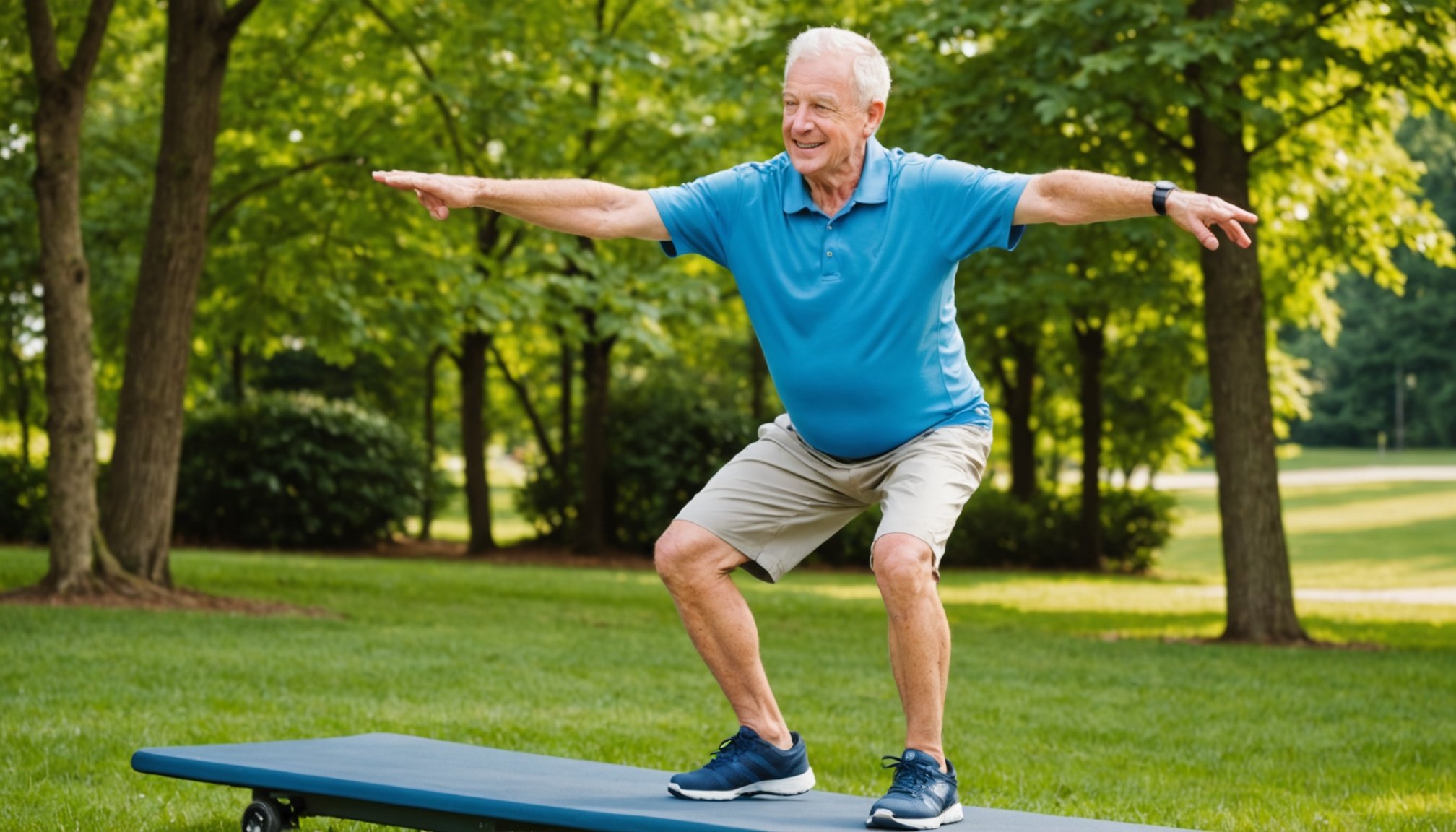Understanding the Importance of Balance Workouts for Seniors
Falls among seniors significantly impact overall health, often leading to injuries that reduce independence. With age, balance naturally declines, increasing the risk of falls. Statistics reveal that one-third of seniors experience falls yearly, often resulting in hospital stays.
Balance workouts are crucial in promoting stability enhancement and reducing falls. These exercises help seniors maintain confidence and perform daily activities independently. Improved balance can lessen the fear of falling, which often leads to decreased mobility and can negatively impact quality of life.
Have you seen this : Essential pain relief techniques for seniors: empowering chronic pain management strategies
By regularly engaging in balance workouts, seniors can enhance mobility and muscle strength, aiding in fall prevention. This empowerment through physical exercise contributes not only to physical stability but also boosts mental well-being. Retaining the ability to move securely allows seniors to continue engaging actively with their communities.
While fall risks persist, implementing consistent balance-training routines can significantly decrease the likelihood of falls. Seniors benefit from exercises tailored to their abilities, gradually increasing complexity and intensity as capabilities improve. A proactive approach to balance workouts ensures that seniors remain active while mitigating fall-related injuries.
In the same genre : Designing ideal therapeutic gardens for seniors with mobility limitations: enhancing well-being through nature
Effective Balance Workouts
Designing specific senior-friendly exercises can transform balance improvement for seniors. These exercises range in complexity, ensuring a suitable challenge for all capabilities and are critical for increasing confidence and stability.
Basic Balance Exercises
For those new to balance training, simple standing exercises enhance stability. These might include standing on one leg by a sturdy chair or walking heel to toe. For individuals with limited mobility, chair-based exercises offer a secure way to build strength. Programs incorporating yoga and tai chi focus on flexibility and balance, providing gentle yet effective improvement in stability.
Intermediate Balance Workouts
To progress further, seniors may engage in dynamic movements like side steps or toe raises. Using balance boards under professional guidance can advance coordination safely. Working in pairs encourages social interaction while practicing, adding a layer of enjoyment and support.
Advanced Balance Techniques
Active seniors ready for a challenge can try more intensive routines. Resistance bands provide added difficulty, requiring more control and strength, thus boosting balance further. Group classes not only motivate through social engagement but also provide supervision, fostering a safe and supportive environment. Participation in these settings can be particularly beneficial, promoting consistent effort and camaraderie.
Guidelines for Safe Practice
Safety is paramount when engaging in balance workouts to enhance stability and assist in fall prevention. Seniors must first consult healthcare providers before embarking on any new workout routines. This ensures exercises are safely aligned with individual health needs, preventing potential injuries or strain.
Understanding personal limits is crucial; seniors should be aware of their capabilities and recognize when to pause or adjust activities. Listening to the body’s signals helps mitigate risks and makes balance training a more positive experience. Building progress gradually fosters confidence without overexertion.
Creating a safe home exercise environment is essential. Here are a few tips for safe practice:
- Clear any obstacles within the workout area to ensure open space for movement.
- Ensure proper lighting to avoid unseen trip hazards.
- Use sturdy support, like chairs or handrails, particularly when performing standing exercises.
Additionally, consider wearing appropriate footwear to prevent slipping during balance workouts. For seniors feeling uncertain, enlisting a family member or friend as a spotter adds an extra layer of security. These safety precautions enable seniors to explore fitness options with confidence, ensuring workouts remain beneficial and risk-free.
Success Stories and Testimonials
Balancing health in our later years is no small feat, but real-life stories of seniors making strides in balance training show it’s possible. Take Jane, who enhanced her stability through dedicated balance workouts. Her routine not only improved her mobility but also rebuilt her confidence in daily activities.
After starting a tailored workout plan, Jane noticed significant improvements in her balance and a decreased fear of falling. Her narrative shows how fall prevention is achievable with consistent effort.
Experts have observed similar transformations in their senior clients. Many report seniors can effectively boost strength and coordination with consistent, safe workout practices. Testimonials from communities underline these findings, evidencing reduced falls and enhanced confidence through balance training programs.
In one community, a senior fitness class became a support hub, fostering connection and shared learning. Participants speak highly of their progress and the role of group dynamics in maintaining motivation and accountability. Through these stories, the profound impact of balance training becomes clear. Engaging in structured, regular exercise isn’t just about physical benefits—it’s about reclaiming independence and joy in everyday life.
Additional Resources and Expert Insights
Exploring fall prevention resources is a crucial step for seniors and caregivers. These resources serve as a foundation for creating effective balance workouts that lead to improved stability enhancement. Let’s delve into these support systems and understand their benefits.
Online Resources
The digital age offers online resources that provide comprehensive guidance for at-home balance training. Websites dedicated to senior health often host instructional videos designed for safe and progressive workouts. Such platforms ensure that seniors can access expert advice in a convenient and accessible manner, helping them maintain independence.
Professional Advice
Seeking recommendations from physical therapists or trainers specializing in senior fitness is invaluable. These experts can tailor workout routines to individual needs, ensuring safety and efficacy. An ongoing evaluation of these routines is essential, as it allows for adjustments that match the evolving capabilities of seniors.
Community Programs
Local community fitness initiatives present an opportunity for social engagement and structured exercise. Participating in group activities not only builds camaraderie but also enhances motivation. Look for workshops or classes in your area that focus on balance training for seniors; these programs often foster a supportive environment, further encouraging participation.

